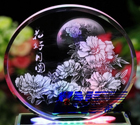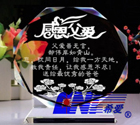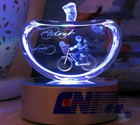IBM's monitoring also showed that the number of confirmed FDI projects in the global chemical and pharmaceutical industry declined during the three years. The number of FDI projects in China was the highest in 2003, which was 275; in 2005, it dropped to 195. In the United States, the number of FDI projects also dropped from 153 in 2003 to 104 in 2005.
Judging from the situation in various regions, FDI in the chemical and pharmaceutical industries has changed from 2003 to 2005. Asian developing markets, including China, India and Thailand, account for one-third of all identified FDI projects. From 2003 to 2005, China's production-related FDI projects decreased by about 10%, and in 2005 accounted for 60.3% of China's total number of chemical FDI projects. Relatively speaking, China's FDI projects related to R&D have nearly doubled here.
Kevin Swift, chief economist of the American Chemistry Council (ACC), believes that developing China is becoming a “world factory†and the long-term development prospects of the chemical industry are promising. China's 264 billion U.S. dollars/year chemicals market is second only to the United States and Japan, ranking third in the world. In 2005, China became the third largest chemical producer, exceeding the output value of 223 billion U.S. dollars in Germany.
The China Chemical Industry Park, which is dedicated to the development of the China Petroleum and Chemical Industry Association, plays an important role in raising investment, attracting foreign investment, promoting industrial development, promoting technological upgrading, developing regional economies, and improving management. China’s large-scale petrochemical companies plan to invest US$20 billion by 2010 to expand their olefins and derivatives. Dow Chemical has planned to invest more than US$200 million to expand its epoxy resin business in China.
Several major joint ventures in China have also set up factories or expand production. Shell and CNOOC have invested in a US$4.3 billion petrochemical complex in Daya Bay, Guangdong Province, and are already in production, targeting the Guangdong market, which accounts for about 20% of China's chemical demand. BASF and Huntsman invested $1 billion in an isocyanate joint venture in Shanghai, which has also started production.
CNI provied other marking system to meet customers' need such as diamond micro engraver, CO2 Laser Marking Machine, fiber Laser Engraving Machine Water Cooled Laser engraving system. The diamond micro engraver features with good Laser beam quality, small focusing spot, Short material interaction time and minimal heat effect which is widely used in diamond waist line marking code, LOGO , Jewelry factory and diamond wholesalers. CNI can offer the total solution of diamond planning, marking and identification, also the separate part such as laser source and Raman Spectrometer are available.
Features:
Applications

• No damage to glass and crystal surface
• Forming plane or three-dimensional lattice images inside the crystal
• Magical effect under the irradiation of seven spectral colors
• Never fades, huge collection and commemorative value
• Decoration, glass processing, studio
• Crystal and glass handicrafts, souvenirs
• Tourist attractions, hotels, galleries
• Mobile phone keys, sticker, ceramic glaze
• Glass bottles, winebottle anti-counterfeiting
• Lenses, optical processing
Specifications
Series
Sub-2000
Max crystal size
150×250×100 mm
Carving range
100×100 mm
Max carving speed
2000 points/s
Point size
100μm
Laser type
End-pumped DPSS laser
Cooling way
Air cooled
Laser wavelength
532±1 nm
Laser rate
2KHz
Machine dimensions
780×500×600 mm
Machine weight
100kg
Power Supply
220VAC
Overall power consumption
2kW





Laser Engraving Machine
Laser Marking Machine for Metal,Mini Laser Marking Machine,Laser Engraving Machine for Glass,Crystal Laser Engraving Machine
Changchun New Industries Optoelectronics Technology Co., Ltd. , https://www.opticsqm.com
